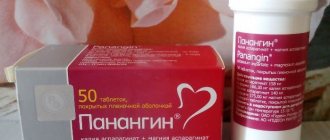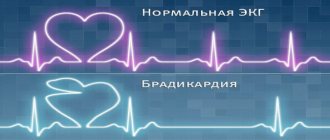The antihypertensive drug Vamloset is prescribed for hypertension. This is a combination drug that contains two potent components: valsartan and amlodipine. Valsartan is an angiotensin 2 receptor blocker, and amlodipine is an active calcium antagonist. Vamloset blood pressure tablets are allowed to be taken only as prescribed by a doctor. This is a prescription drug. Taking the medication requires compliance with an individual treatment regimen and general recommendations, since the likelihood of adverse reactions is high.
Brief information about the drug
Release form
The drug is produced in the form of tablets for oral administration. These are brownish, oblong-shaped tablets, film-coated.
Each tablet is packaged in an individual blister cell. There are blisters of 7 or 10 tablets on sale. In total, the package contains 14, 28, 56, 98, 30, 60, 90, 100 tablets. The kit includes instructions for using Vamloset.
Compound
The tablets contain two main components: valsartan and amlodipine.
Other components of the medicine:
- MCC;
- carboxymethylcellulose;
- polyvinylpyrrolidone;
- sodium dodecyl sulfate;
- mannitol;
- magnesium stearate;
- colloidal silicon dioxide.
Shell components:
- opadry white;
- PVS;
- titanium dioxide;
- polyethylene glycol;
- magnesium silicate;
- food additive E172 red, yellow.
Packaging of Vamloset tablets
pharmachologic effect
The drug has a pronounced hypotensive effect.
Manufacturer
LLC Krka-Rus, Russia
Terms and conditions of storage
It is recommended to store the drug out of the reach of children. Storage temperature should not exceed 30 degrees.
The shelf life of the medicinal product is two years from the date of manufacture. After the expiration date, the medicine cannot be used; it must be disposed of in accordance with sanitary standards.
Conditions for dispensing from a pharmacy
The drug is sold in pharmacies only with a prescription from your doctor.
Price
The price of Vamloset tablets is 390 rubles.
Compound
Composition of 5 mg+80 mg tablets:
- substances – white crystalline powder of amlodipine (6.95 mg), valsartan A (125.676 mg), angiotensin 2 inhibitor (80 mg);
- additional components - microcellulose, sodium starch glycolate, low molecular weight polyvinylpyrrolidone, sodium dodecyl sulfate, hexahydric alditol, magnesium salt and stearic acid, 4-valent silicon oxide;
- components included in the film - polyvinyl alcohol, titanium dioxide, macrogol, white powder, food additive E 172.
Tablets of 5 mg + 160 mg contain substances in the following combinations: white crystalline powder of amlodipine - 6.95 mg, valsartan A - 251.36 mg, angiotensin inhibitor 2 - 160 mg.
The composition of tablets of 10 mg + 160 mg: white crystalline powder of amlodipine - 13.89 mg, valsartan A - 251.36 mg, angiotensin inhibitor 2 - 160 mg.
Pharmacodynamics: effect on blood pressure
The combination type drug has a hypotensive effect. The composition includes two active components from different pharmacological groups. One of the components, amlodipine, belongs to the blockers of slow calcium channels, and valsartan belongs to the pharmacological group of angiotensin 2 blockers. In the complex, the substances provide a pronounced antihypertensive effect, quickly normalizing blood pressure in hypertension.
Vamloset reduces blood pressure thanks to the complex action of the main components. A single dose of the tablet lowers blood pressure for 24 hours. The drug is suitable for long-term use and does not cause withdrawal symptoms. The effectiveness of the drug does not depend on gender, age, race, or weight.
Vamloset is a combination drug for the treatment of hypertension
Interaction
When taken together with other antihypertensive medications and medications whose action is aimed at lowering blood pressure, the hypotensive effect may be enhanced. The table shows drug interactions separately for each active component of the drug:
| Name | Compatibility |
| Amplodin | Bioavailability increases, blood pressure sharply decreases when consumed with fresh grapefruit. |
| The concentration of active substances in the body increases over a certain period of time when combined with azole antifungals or macrolides. | |
| Valsartan | Potassium concentration increases when used in parallel with diuretics or nutritional supplements containing potassium. |
| Excessive levels of lithium in the blood when taken simultaneously with lithium preparations. | |
| Weakening of the hypotensive effect during combined treatment with selective inhibitors and acetylsalicylic acid. |
Pharmacokinetics of the drug
After oral administration, the tablet enters the stomach, where the coating dissolves under the action of gastric juice. Each component has its own time to reach maximum concentration in the blood. The maximum content of valsartan is observed 3 hours after use, and amlodipine - after 6-8 hours.
The bioavailability of valsartan is 23%; when used simultaneously with food, the bioavailability decreases. The bioavailability of amlodipine is 60-80%, there is no dependence on food intake.
The drug has high plasma protein binding of 90-97%. Metabolism occurs in the liver. The half-life is 9 hours. the remaining drug is excreted in feces and urine.
In old age, the half-life of the drug may increase slightly; dose adjustment is not required.
When renal function is impaired, the pharmacokinetics do not change, so dosage adjustment is not necessary in patients with renal failure.
With deficiencies in the liver, the clearance of amlodipine decreases, which leads to an increase in the concentration of the substance. The dosage for liver failure is determined by the attending physician.
Analogues of the drug
If for some reason the use of Vamloset for the treatment of arterial hypertension is impossible, the doctor prescribes analogues. The most popular and popular drug at the moment is the drug Exforge.
The medication is produced in the form of film-coated tablets. Contains valsartan and amlodipine besilate. Indications for use are hypertension, essential hypertension against the background of elevated blood pressure.
- pregnancy;
- excessive sensitivity to the active substances of the drug;
- unilateral and bilateral renal artery stenosis;
- recent kidney transplantation;
- childhood.
The tablets are taken once a day, the dosage and duration of the course are determined individually depending on the medical history, age and concomitant diseases. For elderly patients and with initial, moderate disorders of the liver and kidneys, dose adjustment of the drug is not provided.
When taking the drug, some categories of patients experience the development of side symptoms; most often, patients suffer from coughing attacks, headaches, blurred vision, and flu-like conditions. Constipation, muscle spasms, dry mouth may also appear, sometimes vision is impaired, allergic reactions and angioedema may develop. We also note the drug Valsartan, which is perhaps the most popular drug in this category.
Film-coated tablets
orange-brown, capsule-shaped, biconvex.
Excipients of the granule substance:
microcrystalline cellulose - 164 mg, croscarmellose sodium - 9.5 mg, povidone - 6 mg, sodium lauryl sulfate - 3.2 mg.
Excipients: mannitol - 101.42 mg, magnesium stearate - 18 mg, colloidal silicon dioxide - 4 mg.
Film shell composition:
opadry II white - 14 mg (polyvinyl alcohol - 40%, titanium dioxide (E171) - 25%, macrogol - 20.2%, talc - 14.8%), iron dye yellow oxide (E172) - 1.8 mg, iron oxide dye red (E172 ) - 0.2 mg.
7 pcs. — contour cell packaging (2) — cardboard packs. 7 pcs. — contour cell packaging (4) — cardboard packs. 7 pcs. — contour cell packaging (8) — cardboard packs. 7 pcs. — contour cell packaging (14) — cardboard packs. 10 pieces. — cellular contour packages (3) — cardboard packs. 10 pieces. — contour cell packaging (6) — cardboard packs. 10 pieces. — contour cell packaging (9) — cardboard packs. 10 pieces. — contour cell packaging (10) — cardboard packs.
Film-coated tablets
brownish-yellow, capsule-shaped, biconvex.
Excipients of the granule substance:
microcrystalline cellulose - 164 mg, croscarmellose sodium - 9.5 mg, povidone - 6 mg, sodium lauryl sulfate - 3.2 mg.
Excipients: mannitol - 101.42 mg, magnesium stearate - 18 mg, colloidal silicon dioxide - 4 mg.
Film shell composition:
opadry II white - 14 mg (polyvinyl alcohol - 40%, titanium dioxide (E171) - 25%, macrogol - 20.2%, talc - 14.8%), iron dye yellow oxide (E172) - 2 mg.
7 pcs. — contour cell packaging (2) — cardboard packs. 7 pcs. — contour cell packaging (4) — cardboard packs. 7 pcs. — contour cell packaging (8) — cardboard packs. 7 pcs. — contour cell packaging (14) — cardboard packs. 10 pieces. — cellular contour packages (3) — cardboard packs. 10 pieces. — contour cell packaging (6) — cardboard packs. 10 pieces. — contour cell packaging (9) — cardboard packs. 10 pieces. — contour cell packaging (10) — cardboard packs.
A combined antihypertensive drug containing two active substances with a complementary mechanism for controlling blood pressure (BP). Amlodipine, a dihydropyriline derivative, belongs to the class of “slow” calcium channel blockers (SCBCs), valsartan belongs to the class of angiotensin II receptor antagonists. The combination of these components has a mutually complementary hypotensive effect, which leads to a more pronounced decrease in blood pressure compared to blood pressure when they are used separately.
The combination of amlodipine and valsartan reduces blood pressure in an additive dose-dependent manner over the therapeutic dose range. When taking a single dose of the amlodipia/valsartan combination, the hypotensive effect lasts for 24 hours.
The clinical effectiveness of the combination of amlodipia/valsartai has been proven in patients with mild and moderate arterial hypertension (mean diastolic blood pressure (DBP) ≥ 95 mm Hg and 30 ml/min); no adjustment of the initial dose is required.
Patients with impaired liver function:
valsartan is contraindicated in patients with severe liver failure, biliary cirrhosis and cholestasis. The maximum daily dose of valsartan for mild to moderate liver failure is 80 mg. The drug Vamloset at a dose of 5/160 mg, 5/320 mg, 10/160 mg and 10/320 mg is contraindicated.
Elderly patients:
no dose adjustment is required.
World Health Organization (WHO) classification of the incidence of side effects: very often (≥1/10), often (≥1/100 to 30 ml/min) no adjustment of the initial dose is required.
When use is contraindicated
Contraindications to taking the medication Vamloset for blood pressure can be absolute or relative. In case of absolute contraindications, the use of the medication is strictly prohibited; in case of relative contraindications, Vamloset should be taken with caution when dealing with blood pressure.
Absolute contraindications
You should absolutely not take Vamloset if you have high blood pressure in the following cases:
- individual intolerance to components;
- severe liver failure;
- biliary cholangitis;
- cholestatic syndrome;
- period of bearing a child;
- lactation;
- severe kidney failure;
- hemodialysis;
- low pressure;
- collapse;
- state of shock;
- hypertrophic cardiomyopathy;
- non-coronary heart diseases;
- aortic valve stenosis;
- unstable heart failure after an attack;
- Conn's syndrome;
- simultaneous use of aliskiren in diabetics or patients with renal impairment.
Doctors do not recommend prescribing Vamloset for high blood pressure to patients under 18 years of age, as well as to patients after a kidney transplant.
Hypertrophic cardiomyopathy is one of the contraindications to the use of the drug
Use with caution
It is recommended to take blood pressure pills with caution when:
- disturbances in liver function of initial or moderate degree;
- obstruction of the biliary tract;
- impaired renal function of initial or moderate degree;
- renal artery stenosis of one or two kidneys;
- chronic heart failure;
- excess potassium;
- sodium deficiency;
- low salt diet;
- decreased volume of circulating blood;
- history of Quincke's edema.
Caution should also be observed in patients with mitral or aortic valve stenosis who are being treated with vasodilators.
Contraindications
Vamloset should not be taken in the following situations:
- liver diseases;
- cirrhosis;
- renal failure;
- the presence of an artificial kidney in the human body;
- low blood pressure;
- collapse;
- shock situation;
- pathologies of the cardiovascular system;
- acute heart attack;
- diabetes;
- primary hyperaldosteronism;
- bearing a fetus;
- breastfeeding period;
- the presence of allergic reactions to the components contained in the drug.
It is not recommended to take Vamloset for children under 18 years of age.
During pregnancy and breastfeeding
The drug should not be taken during pregnancy, especially in the first and second trimester, when the fetus is developing rapidly. The components can have a negative effect on the development of the fetus and cause birth defects.
Women undergoing therapy with Vamloset for hypertension should use reliable contraception to prevent sudden pregnancy.
If pregnancy occurs during pill therapy, you should consult a doctor and stop taking the drug.
In the second and third trimester, the drug may cause changes in the physiological development of the fetus, premature birth or intrauterine fetal death.
Vamloset should not be prescribed to nursing mothers for high blood pressure, since the components pass into breast milk and can cause poisoning to the baby. If therapy is necessary, breastfeeding should be stopped for a while.
Vamloset is contraindicated during pregnancy and breastfeeding.
Pregnancy
A drug
contraindicated during pregnancy.
Considering the mechanism of action of ARA II, a risk to the fetus cannot be excluded when using the drug in the first trimester of pregnancy.
Like any other drug that directly affects the RAAS, Vamloset should not be used during pregnancy, or in women planning pregnancy. When prescribing drugs that affect the RAAS, it is necessary to inform women of childbearing age about the potential risk of negative effects of these drugs on the fetus during pregnancy.
The drug Vamloset, like other drugs that have a direct effect on the RAAS, is contraindicated in the II–III trimesters of pregnancy, since it can cause fetotoxic effects (impaired renal function, delayed ossification of fetal skull bones, oligohydramnios) and neonatal toxic effects (renal failure, arterial hypotension , hyperkalemia) and fetal death.
If, however, the drug was used in the II–III trimesters of pregnancy, then it is necessary to conduct an ultrasound of the kidneys and bones of the fetal skull. Newborns whose mothers took Vamloset during pregnancy should be monitored because the development of arterial hypotension in the newborn is possible.
It is not recommended to use Vamloset during breastfeeding. If therapy with Vamloset is necessary during lactation, breastfeeding should be discontinued.
Contraindicated in children and adolescents under 18 years of age, because The safety of using Vamloset in children and adolescents under 18 years of age has not been established.
Like other drugs that have a direct effect on the RAAS, Vamloset is contraindicated in the 2-3 trimesters of pregnancy, as it can cause fetotoxic effects.
It is not recommended to use Vamloset during breastfeeding. If it is necessary to use the drug during lactation, breastfeeding should be stopped.
Scientists have not proven that the drug is completely safe for treating children under 18 years of age, so the attending physician can prescribe it only in emergency cases when blood pressure has exceeded normal levels. Taking the medicine at home without the consent of experienced specialists is prohibited.
Instructions for use and dosage
The drug is intended for oral use. It is recommended to take the tablets in the morning before meals with plenty of drinking water. The tablets are taken whole. Do not break, crush, dissolve or crush the tablets. The capsule must dissolve naturally under the action of gastric juice so that the desired concentration of active substances in the blood is achieved.
The recommended dosage for hypertension is 1 tablet per day. It is recommended to take the drug with a minimum dosage. These are tablets containing amlodipine/valsartan at a dose of 5/80 mg. The dosage is gradually increased. You can increase the dose once a week. The maximum daily dose is 5/320 mg per day. The individual dosage, duration and frequency of use are determined by the attending physician.
Special recommendations for Amlodipine:
- if renal function is impaired, no dosage adjustment is required;
- patients with impaired liver function require dose adjustment;
- in old age there is no need to change the dosage.
Special recommendations for Valsartan:
- if renal function is impaired, no dose adjustment is required;
- for mild liver dysfunction, the maximum dosage is 80 mg, other combinations are not permissible;
- Elderly patients do not need to change the dosage.
Additionally
Patients with hyponatremia and/or decreased blood volume
In patients with uncomplicated arterial hypertension taking the amlodipine/valsartan combination, severe arterial hypotension was observed in 0.4% of cases.
In patients with an activated RAAS (for example, in patients with dehydration and/or hyponatremia taking diuretics in high doses), symptomatic arterial hypotension may develop when taking ARA II.
Before starting treatment, it is recommended to restore sodium levels and/or replenish blood volume, in particular by reducing the doses of diuretics or starting therapy under close medical supervision.
If a pronounced decrease in blood pressure develops: the patient should be placed in a horizontal position with legs raised and, if necessary, given an intravenous infusion of 0.9% sodium chloride solution. Therapy with Vamloset can be continued after stabilization of hemodynamic parameters.
Hyperkalemia
Caution should be exercised when using potassium-sparing diuretics, potassium supplements, dietary supplements containing potassium or other drugs that can increase the level of potassium in the blood plasma (for example, heparin). It is necessary to regularly monitor the content of potassium ions in the blood plasma.
Renal artery stenosis
The drug Vamloset should be used with caution in patients with arterial hypertension against the background of unilateral or bilateral renal artery stenosis or stenosis of the artery of a single kidney, taking into account the possibility of increasing serum concentrations of urea and creatinine.
Condition after kidney transplantation
The safety of the combination of amlodipine valsartan in patients who have recently undergone kidney transplantation has not been established.
Liver dysfunction
Valsartan is predominantly excreted unchanged in bile. In patients, T1/2 is prolonged and AUC is increased. Caution should be exercised when using Vamloset in patients with mild (5-6 points on the Child-Pugh scale) or moderate (7-8 points on the Child-Pugh scale) impaired liver function or obstructive diseases of the biliary tract.
Renal dysfunction
No dose adjustment of Vamloset is required in patients with mild to moderate renal impairment. In patients with moderate renal impairment, monitoring of potassium levels and plasma creatinine concentrations is recommended. The simultaneous use of ARB II, including valsartan, or ACE inhibitors with aliskiren is contraindicated in patients with impaired renal function (Cl creatinine less than 60 ml/min).
Primary hyperaldosteronism
Considering the damage to the RAAS in primary hyperaldosteronism, these patients should not be prescribed ARA II, incl. valsartan.
Angioedema
In patients with angioedema (including swelling of the larynx and vocal cords, causing airway obstruction and/or swelling of the face, lips, pharynx and/or tongue) during treatment with Valsacor®, a history of angioedema has been observed, incl. and ACE inhibitors. If angioedema develops, the drug should be discontinued immediately and the possibility of repeated use should be excluded.
Heart failure/myocardial infarction
In patients whose renal function may depend on the activity of the RAAS (for example, in severe CHF), therapy with ACE inhibitors and ARA II is accompanied by oliguria and/or an increase in azotemia, and in rare cases, acute renal failure and/or death. Similar outcomes have been described with valsartan. In patients with CHF or previous myocardial infarction, renal function should always be assessed.
In patients with CHF of non-ischemic etiology of functional class III–IV according to the NYHA classification, the use of amlodipine was accompanied by an increase in the incidence of pulmonary edema compared with placebo, with no significant difference in the incidence of worsening CHF between the two groups. BPC, incl. amlodipine should be used with caution in patients with CHF, because there may be an increased risk of cardiovascular complications and death.
Mild to moderate aortic valve and mitral valve stenosis
As with any vasodilator, caution should be exercised in patients with mitral stenosis and mild to moderate aortic stenosis. The combination of amlodipine valsartan has been studied only in patients with arterial hypertension.
Impact on the ability to drive vehicles and operate machinery. When using the drug Vamloset, you must be careful when driving vehicles and other technical devices that require increased concentration and speed of psychomotor reactions, because Dizziness, fatigue and nausea may occur.
Tags: valmosat, pressure, increased
About the author: admin4ik
« Previous entry
special instructions
Sodium deficiency or decreased blood volume
In patients with sodium deficiency and reduced circulating blood volume, Vamloset may cause hypotension at elevated blood pressure. Before course use of Vamloset, it is necessary to compensate for the lack of sodium and the volume of circulating blood. If the patient is taking diuretics, it is necessary to reduce the daily dosage or discontinue the diuretic. It is necessary to start therapy with Vamloset tablets only under the supervision of a doctor.
If blood pressure drops significantly to critical values, the patient should be placed with his legs elevated and sodium chloride 0.9% administered intravenously. Treatment with Vamloset can be resumed only after blood counts have normalized.
A special diet will help replenish the lack of sodium in the body
Excess potassium
Particular caution when taking Vamloset tablets should be observed in patients who are simultaneously taking potassium-containing or potassium-sparing drugs, dietary supplements with potassium, and other medications that cause an increase in the concentration of potassium in the blood. Such patients need to regularly monitor serum potassium levels.
Stenosis of the arteries of one or two kidneys
In patients with this diagnosis, the use of Vamloset may provoke an increase in the level of creatinine and urea in the blood.
Kidney transplant
There is no information about the safety of taking Vamloset in patients who have undergone a kidney transplant, so doctors prescribe the medicine Vamloset for blood pressure only in exceptional cases.
Conn's syndrome
Taking medication for Conn's syndrome is contraindicated.
Quincke's edema
Taking the drug may provoke angioedema in patients with a genetic predisposition to edema or an allergy to the components.
If Quincke's edema develops, the medication should be discontinued.
Heart failure or heart attack
The drug should be taken with caution in patients with a history of heart failure, as well as after a heart attack. Taking this medication can cause sudden death.
Control of vehicles and complex mechanisms
When undergoing therapy with Vamloset tablets, you must refrain from driving vehicles or performing complex work that requires increased concentration. Taking pills can cause changes in psychomotor reactions, dizziness, headaches, which will affect alertness.
Taking pills may have a negative impact on alertness
Renal dysfunction
For mild or moderate renal dysfunction, no dose adjustment is required. With moderate forms of disorders, it is necessary to monitor potassium and creatinine levels in the blood. In case of renal failure, Vamloset should not be taken simultaneously with angiotensin 2 receptor antagonists or angiotensin-converting enzyme inhibitors.
Liver dysfunction
The drug should not be taken in severe forms of organ dysfunction. Functional changes in mild or moderate form allow taking the medication, but it is necessary to adjust the dosage, since the half-life and concentration of components in the blood may change. The maximum permitted daily dosage is 80 mg.
Who is Vamloset indicated for and how to take it correctly
The drug is prescribed for spontaneous arterial hypertension and for the treatment of secondary hypertension in cases where a single agent is not effective enough. The result of studies conducted by European scientists at the beginning of this century was confirmation that angiotensin-II receptor blockers have a positive effect on the body: they reduce left cardiac ventricular hypertrophy, arrhythmia, protein content in the urine, insulin resistance, improve renal blood flow and diastolic function of the heart muscle.
The LIFE, SCOPE and VALUE methods showed the positive effect of sartans in problematic myocardial diseases. RENAAL and IDNT have confirmed their effectiveness in the early stages of renal failure. It has been proven to improve the prognosis for pathologies of the heart and circulatory system, reduce the risk of complications of cardiac and vascular diseases, and inhibit the processes leading to impaired renal function.
The conducted studies made it possible to expand the recommendations for prescribing drugs containing sartans. This fully applies to Vamloset, one of the active components of which is the representative of the group - Valsartan. The combined agent is indicated for normalizing blood pressure in patients:
- with diagnosed heart failure;
- after a heart attack;
- with left ventricular hypertrophy, atrial fibrillation;
- those suffering from diabetic nephropathy (damage to the renal tubules, glomeruli and the vessels that feed them);
- with the risk of developing cardiac and renal pathologies (detection of protein in urine tests in quantities exceeding the norm, microalbuminuria).
Angiotensin-II blockers do not increase the level of proteins in the blood, which compares favorably with ACE inhibitors, which can cause cough and angioedema. Vamloset is prescribed if captopril, Prestarium and other representatives of the group are poorly tolerated. The drug also contains Amlodipine, which has hypotensive and antianginal properties. Therefore, the list of indications includes various forms of coronary heart disease, including angina.
The wide range of applications does not exclude careful monitoring and control when using Vamloset in the treatment regimen for certain groups of patients. If heart failure is diagnosed, the condition of the kidneys and liver is analyzed before prescribing the drug.
If for patients with mild renal impairment there is no need to change the dose of Vamloset, then for patients with biliary tract disease or mild liver failure, the drug should be used with caution and only in the minimum dosage (5 mg + 80 mg). Patients with moderate kidney pathology are prescribed the combination drug under the control of potassium and creatinine levels in the blood plasma.
Severe forms of pathology - liver cirrhosis, cholestasis - completely exclude the possibility of using Vamloset in therapy.
Caution does not hurt if arterial hypertension accompanies renal artery stenosis. Monitoring of creatinine and urea concentrations is necessary. Despite the fact that pathological conditions limiting the availability of Vamloset are typical for the elderly, it has been established that the mere fact that patients belong to older age categories does not require dose adjustment.
Persons taking Vamloset who drive a car or operate machinery should exercise caution. According to the instructions for the Vamloset blood pressure tablets, the recommended daily dose is taken once with water, regardless of meals.
You should start taking it with one tablet with the minimum dosage. If an increase is necessary, it can be changed no earlier than a week after the start of therapy.
The maximum daily intake is 10/320. If it was accidentally exceeded, gastric lavage and adsorbents will help. If there is a sharp decrease in pressure or a deterioration in the patient’s condition, which in practice does not exceed 0.4% of cases, an intravenous injection can be given with a slow injection of sodium chloride, having first laid the victim on his back with his legs elevated. Therapy with Vamloset can be continued after the condition has stabilized.
Side effects
Tablets for hypertension Vamloset can provoke the appearance of undesirable reactions from the functioning of internal organs or major vital systems. Main side effects:
- immunity: hypersensitivity;
- infections: nasopharyngitis, flu symptoms;
- metabolism: lack or excess of potassium, complete loss of appetite, excess calcium, hyperlipoproteinemia, increased uric acid, sodium deficiency, increased glucose levels;
- nervous system: increased anxiety, headaches, vestibular disorders, dizziness, postural instability, sensitivity disorder, drowsiness, depressive state, causeless mood swings, clouding of consciousness, polyneuropathy, impaired motor activity;
- organs of perception: visual impairment, ringing in the ears;
- cardiovascular system: palpable heartbeat, increased heart rate, loss of consciousness, orthostatic collapse, sharp drop in blood pressure to critical values, heart attack, change in heart rhythm, hyperemia;
- circulatory system: decreased leukocyte count, decreased platelet count, primary immune thrombocytopenia;
- respiratory organs: cough, sore throat, runny nose, dyspnea;
- digestive system: loose stools, vomiting, pain in the upper abdomen on palpation, indigestion, difficulty defecating, dry mouth, gastritis;
- skin: peeling, redness, rashes, exanthema, increased sweating, itching;
- musculoskeletal system: joint pain, back pain, joint inflammation, muscle spasms, heaviness in the body;
- genitourinary system: frequent urination, increased urine production, impotence;
- other reactions: asthenic syndrome, fatigue, swelling, facial hyperemia.
Side effects may include increased sweating and vestibular disorders
Overdose
Symptoms of drug overdose
: There are currently no data on overdose cases. In case of an overdose of valsartan, one can expect the development of a pronounced decrease in blood pressure and dizziness. An overdose of amlodipine can lead to a pronounced decrease in blood pressure with the possible development of reflex tachycardia and excessive peripheral vasodilation (risk of severe and persistent arterial hypotension, including the development of shock and death).
Treatment: symptomatic, the nature of which depends on the time elapsed since taking the drug and the severity of the symptoms. In case of accidental overdose, induce vomiting (if the drug was taken recently) or perform gastric lavage. The use of activated charcoal in healthy volunteers immediately or within 2 hours after taking amlodipine led to a significant decrease in its absorption.
If there is a pronounced decrease in blood pressure while taking the drug Vamloset, it is necessary to transfer the patient to a supine position with elevated legs, take active measures to maintain the activity of the cardiovascular system, including regular monitoring of the function of the heart and respiratory system, blood volume and the volume of urine excreted. In the absence of contraindications, in order to restore vascular tone and blood pressure, it is possible to use (with caution) vasoconstrictors. To eliminate blockade of calcium channels, intravenous administration of a calcium gluconate solution is possible.
Removal of valsartan and amlodipine during hemodialysis is unlikely.
Symptoms of drug overdose:
- excessive drop in pressure;
- severe dizziness;
- tachycardia;
- risk of developing arterial hypotension.
You can get rid of symptoms by gastric lavage and inducing vomiting with other drugs.
You can take activated charcoal at home, and within 2 hours the symptoms should go away. If this does not happen, you should call an ambulance.
Drug overdose
Symptoms
In case of an overdose, the pressure can drop sharply to critical levels, which is accompanied by dizziness, increased heart rate, and dilation of peripheral blood vessels. Severe overdose may cause a heart attack or sudden death.
Treatment
Therapy depends on the patient's condition and the degree of overdose. In case of mild overdose, it is necessary to rinse the stomach, induce artificial vomiting, and give an adsorbent. In case of severe overdose, which is accompanied by a strong decrease in blood pressure, it is necessary to lay the patient horizontally, raising his legs, give medications to maintain heart function, monitor respiratory function, and call an ambulance. To normalize the condition, you can give the patient vasoconstrictor tablets.
Hemodialysis is ineffective.
Composition, properties and release form
The antihypertensive drug "Vamloset" contains such active ingredients as valsartan and amlodipine. The tandem of components allows you to quickly and effectively reduce high blood pressure. "Vamloset" stabilizes blood pressure, removes swelling of the skin tissue that occurs against the background of high blood pressure. The components of the drug, penetrating inside the body, begin to act immediately, and the first result is noticeable after 1.5-2 hours. In addition to amlodipine and valsartan, the described antihypertensive medication contains the following additional components:
- MCC;
- croscarmellose sodium;
- antiseptic;
- sodium salt of lauryl sulfuric acid.
"Vamloset" is produced in tablet form, where each pill is coated. The tablets are placed in packages containing from 14 to 100 pieces. The main advantage of Vamloset is its high efficiency, which manifests itself regardless of gender, body weight and age of the patient. In addition, the advantage of the drug is its antihypertensive effect, which persists for a long time. During treatment, Vamloset does not affect the heart rate.
It is recommended to take the pharmaceutical drug "Vamloset" for patients who have been diagnosed with unstable blood pressure. The composition of the drug allows it to be used as a combination therapy. Only the attending physician should prescribe medication, since self-medication is dangerous due to the development of serious negative phenomena and a deterioration in overall health.
Drug interactions
The drug Vamloset for blood pressure cannot be taken with some other medications due to a possible change in pharmacological properties:
- antihypertensive drugs, tricyclics, alpha and beta blockers, diuretics increase the hypotensive effect;
- grapefruit and fruit juice increase the bioavailability of the drug and increase the antipertensive effect;
- isoenzyme CYP3A4, protease inhibitors, azole antimycotics, macrolide antibiotics increase the elimination time of Vamloset;
- with the use of Vamloset, the half-life of the lipid-lowering drug Simvastatin increases, it is necessary to change the daily dosage;
- the muscle relaxant Dantrolene intravenously can lead to ventricular fibrillation, sudden death, heart failure;
- Angiotensin 2 receptor antagonists and angiotensin-converting enzyme inhibitors should not be taken in combination with Vamloset for diabetics and patients with kidney impairment;
- lithium-containing drugs in combination with Vamloset tablets can cause lithium intoxication due to increased concentrations of the substance; it is necessary to monitor the lithium content in the blood;
- potassium-containing and potassium-sparing drugs, dietary supplements, and other drugs that affect the potassium content in the blood can lead to an excess of potassium in the blood; During complex therapy, it is necessary to monitor potassium levels in the blood;
- taking non-steroidal anti-inflammatory drugs, selective cyclooxygenase 2 inhibitors, aspirin with Vamloset tablets is not recommended due to a possible decrease in the antihypertensive effect, the likelihood of renal dysfunction, a sharp increase in potassium in the blood increases, before starting therapy it is necessary to adjust the level of water-electrolyte metabolism.
Vamloset has difficult interactions with other drugs, so you should consult your doctor about the possibility of taking them together.
The drug Vamloset does not have a pronounced effect on the pharmacokinetic and pharmacodynamic properties of the following drugs:
- thiazide diuretics;
- alpha-blockers;
- beta blockers;
- angiotensin-converting enzyme inhibitors;
- nitrate-containing medications;
- magnesium- and aluminum-containing preparations;
- antacids;
- antidiabetic drugs;
- nitroglycerine;
- digoxin;
- warfarin;
- atorvastatin;
- sildenafil;
- Maalox;
- Simethicone
Side effects
WHO classification of the incidence of side effects: very often - ≥1/10; often - from ≥1/100 to {amp}lt;1/10; uncommon - from ≥1/1000 to {amp}lt;1/100; rarely - from ≥1/10000 to {amp}lt;1/1000; very rarely - {amp}lt;1/10000; frequency unknown—cannot be estimated from available data.
We invite you to read: Normal eye pressure in adults
Infectious and parasitic diseases: often - nasopharyngitis, influenza.
From the immune system: rarely - hypersensitivity.
Metabolism and nutrition: often - hypokalemia; uncommon - anorexia, hypercalcemia, hyperlipidemia, hyperuricemia, hyponatremia.
Mental disorders: rarely - anxiety.
From the nervous system: often - headache; uncommon - loss of coordination, dizziness, postural dizziness, paresthesia, drowsiness.
From the side of the organ of vision: infrequently - visual impairment; rarely - visual impairment.
From the organ of hearing and labyrinthine disorders: infrequently - vertigo; rarely - tinnitus.
From the side of the heart: infrequently - palpitations, tachycardia; rarely - fainting.
From the side of blood vessels: infrequently - orthostatic hypotension; rarely - a pronounced decrease in blood pressure.
From the respiratory system, chest and mediastinal organs: infrequently - cough, pain in the pharynx and larynx.
From the digestive system: uncommon - diarrhea, nausea, abdominal discomfort, pain in the upper abdomen, constipation, dry oral mucosa.
From the skin and subcutaneous tissues: infrequently - erythema, skin rash; rarely - exanthema, hyperhidrosis, itching.
From the musculoskeletal and connective tissue side: infrequently - arthralgia, back pain, swelling of the joints; rarely - muscle spasms, a feeling of heaviness throughout the body.
From the kidneys and urinary tract: rarely - pollakiuria, polyuria.
From the genital organs and breast: rarely - erectile dysfunction.
General disorders and disorders at the injection site: often - asthenia, increased fatigue, facial swelling, a feeling of a rush of blood to the facial skin, edema, peripheral edema, pastosity.
Amlodipine
From the blood and lymphatic system: very rarely - leukopenia, thrombocytopenia, sometimes with purpura.
From the immune system: very rarely - hypersensitivity.
Metabolism and nutrition: very rarely - hyperglycemia.
Mental disorders: uncommon - depression, insomnia/sleep disorders, mood lability; rarely - confusion.
From the nervous system: often - dizziness, headache, drowsiness; uncommon - taste disturbance, paresthesia, fainting, tremor, hypoesthesia; very rarely - muscle hypertonicity, peripheral neuropathy, neuropathy; frequency unknown - extrapyramidal disorders.
From the organ of vision: infrequently - blurred vision, blurred vision.
From the organ of hearing and labyrinthine disorders: infrequently - tinnitus.
From the side of the heart: often - palpitations; very rarely - arrhythmias (including bradycardia, ventricular tachycardia and atrial fibrillation), myocardial infarction.
From the side of blood vessels: often - a feeling of a rush of blood to the skin of the face, a pronounced decrease in blood pressure; very rarely - vasculitis.
From the respiratory system, chest and mediastinal organs: infrequently - shortness of breath, rhinitis; very rarely - cough.
From the digestive system: often - nausea, abdominal discomfort, pain in the upper abdomen; uncommon - changes in stool, diarrhea, dry oral mucosa, dyspepsia, vomiting; rarely - gastritis, gingival hyperplasia, pancreatitis.
From the liver and biliary tract: very rarely - increased activity of liver enzymes (usually with symptoms of cholestasis), increased concentration of bilirubin in the blood plasma, hepatitis, intrahepatic cholestasis, jaundice.
From the skin and subcutaneous tissues: infrequently - alopecia, exanthema, erythema, photosensitivity reactions, itching, hyperhidrosis, purpura, skin rash, change in skin color; very rarely - erythema multiforme, urticaria, exfoliative dermatitis, Stevens-Johnson syndrome, angioedema.
From the musculoskeletal and connective tissue side: often - swelling of the ankles; uncommon - arthralgia, back pain, muscle spasms, myalgia.
From the kidneys and urinary tract: infrequently - urinary disorders, nocturia, pollakiuria.
From the genital organs and breast: uncommon - erectile dysfunction, gynecomastia.
General disorders and disorders at the injection site: often - increased fatigue, peripheral edema; uncommon - asthenia, discomfort, malaise, non-cardiogenic heart pain, pain.
Laboratory and instrumental data: infrequently - decrease/increase in body weight.
Valsartan
From the blood and lymphatic system: frequency unknown - decrease in hemoglobin and hematocrit, leukopenia, neutropenia, thrombocytopenia, sometimes with purpura.
From the organ of hearing and labyrinthine disorders: infrequently - vertigo.
From the side of blood vessels: frequency unknown - vasculitis.
From the respiratory system, chest and mediastinal organs: infrequently - cough.
From the digestive system: infrequently - a feeling of discomfort in the abdomen, pain in the upper abdomen.
From the liver and biliary tract: frequency unknown - increased activity of liver enzymes, increased concentration of bilirubin in the blood plasma.
From the skin and subcutaneous tissues: frequency unknown - skin itching, skin rash, angioedema.
Musculoskeletal and connective tissue disorders: frequency unknown - myalgia.
From the kidneys and urinary tract: frequency unknown - increased concentration of creatinine in the blood plasma, impaired renal function, including acute renal failure.
General disorders and disorders at the injection site: uncommon - increased fatigue.
Laboratory and instrumental data: frequency unknown - increased potassium levels in the blood serum.
Additional information about the components of the drug
Adverse events previously reported with each of the components may occur with Vamloset, even if they were not observed in clinical studies.
Amlodipine
Often - drowsiness, dizziness, palpitations, abdominal pain, nausea, swelling of the ankles.
Uncommon: insomnia, mood lability (including anxiety), depression, tremor, taste disturbance, fainting, hypoesthesia, visual impairment (including diplopia), tinnitus, marked decrease in blood pressure, shortness of breath, rhinitis, vomiting , dyspepsia, alopecia, purpura, skin discoloration, hyperhidrosis, itching, exanthema, myalgia, muscle cramps, pain, urinary disturbance, increased frequency of urination, impotence, gynecomastia, chest pain, malaise, weight gain, weight loss.
Rarely - confusion.
Very rarely - leukopenia, thrombocytopenia, allergic reactions, hyperglycemia, muscle hypertonicity, peripheral neuropathy, myocardial infarction, arrhythmias (including bradycardia, ventricular tachycardia and atrial fibrillation), vasculitis, pancreatitis, gastritis, gingival hyperplasia, hepatitis, jaundice, increased activity of liver enzymes (most often due to cholestasis), angioedema, erythema multiforme, urticaria, exfoliative dermatitis, Stevens-Johnson syndrome, photosensitivity.
Isolated cases of extrapyramidal syndrome have been described.
Valsartan
Frequency unknown - decreased hemoglobin and hematocrit, neutropenia, thrombocytopenia, increased serum potassium, increased liver enzyme activity, increased plasma bilirubin concentration, increased plasma creatinine concentration, impaired renal function, including renal failure, angioedema, myalgia , vasculitis, hypersensitivity, including serum sickness.
Vamloset (amlodipine/valsartan)
Concomitant use requiring attention
Other antihypertensive drugs (for example, alpha-blockers, diuretics) and drugs that have a hypotensive effect (for example, tricyclic antidepressants, alpha-blockers for the treatment of benign prostatic hyperplasia) may enhance the hypotensive effect.
Amlodipine
Undesirable simultaneous use
Grapefruit or grapefruit juice: Concomitant use is not recommended due to the potential for increased bioavailability in some patients and increased hypotensive effects.
Concomitant use requiring caution
Inhibitors of the CYP3A4 isoenzyme: simultaneous use with strong or moderate inhibitors of the CYP3A4 isoenzyme (protease inhibitors, verapamil or diltiazem, azole antifungals, macrolides such as erythromycin or clarithromycin) can lead to a significant increase in the systemic exposure of amlodipine.
We suggest you read: Phezam increases or decreases blood pressure
In elderly patients, these changes are of clinical significance, so medical supervision and dosage adjustment are necessary.
Inducers of the CYP3A4 isoenzyme (anticonvulsants (for example, carbamazepine, phenobarbital, phenytoin, fosphenytoin, primidone), rifamycin, herbal preparations containing St. John's wort): should be used with caution, because. with simultaneous use, a decrease in the concentration of amlodipine in the blood plasma is possible.
Simvastatin: Concomitant repeated use of amlodipine 10 mg and simvastatin 80 mg increases the exposure of simvastatin by 77% compared with that of simvastatin monotherapy. For patients receiving amlodipine, it is recommended to use simvastatin at a dose of no more than 20 mg/day.
Dantrolene (IV administration): In animal experiments, cases of fatal ventricular fibrillation and cardiovascular failure associated with hyperkalemia were observed after oral administration of verapamil and intravenous administration of dantrolene. Given the risk of developing hyperkalemia, simultaneous use of CCBs should be avoided, incl. amlodipine, in patients prone to the development of malignant hyperthermia.
Others: in clinical studies of amlodipine there is no significant interaction with thiazide diuretics, alpha-blockers, beta-blockers, ACE inhibitors, long-acting nitrates, sublingual nitroglycerin, digoxin, warfarin, atorvastatin, sildenafil, aluminum and/or magnesium-containing antacids, incl. Maalox, simethicone, cimetidine, NSAIDs, antibiotics and oral hypoglycemic agents.
Valsartan
- cough;
- anorexia;
- hypokalemia;
- drowsiness;
- noise in ears;
- nausea;
- blurred vision;
- nasopharyngitis;
- pastiness;
- anxiety;
- arthralgia;
- skin rash;
- headache;
- hyperlipidemia;
- pain in the upper abdomen;
- hypersensitivity;
- skin itching;
- hyperhidrosis;
- dizziness;
- exanthema;
- dryness of the oral mucosa;
- pollakiuria;
- polyuria;
- swelling;
- swelling of the joints;
- feeling of heartbeat;
- erectile disfunction;
- pain in the pharynx and larynx;
- visual impairment;
- pronounced decrease in blood pressure;
- muscle spasms;
- increased fatigue;
- orthostatic hypotension;
- flu;
- vertigo;
- lack of coordination;
- feeling of heaviness throughout the body;
- erythema;
- paresthesia;
- diarrhea, constipation;
- hypercalcemia;
- fainting;
- backache;
- asthenia;
- tachycardia;
- postural dizziness;
- feeling of discomfort in the stomach.











